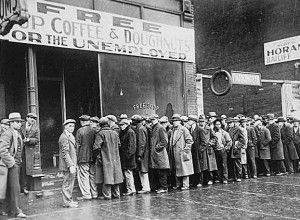California’s real debt $617 billion
Oct. 26, 2012
Katy Grimes: As California voters head out to vote on November 6, everyone should note that California’s real debt is not just the measly $16 billion that Gov. Jerry Brown and state Democrats bandy about; California’s real debt is $617 billion.
“California again trumped other states with a $617 billion debt,” State Budget Solution reported in August. “California’s debt is more than twice the size of New York’s state debt, and New York has the second largest total debt burden in the nation.”
The reason for the disparity in numbers? “Unfunded public pension liabilities make up more than half of all state debt,”according to State Budget Solutions. The pension liabilities of the total debt represent the $2.8 trillion owed to public pension systems “as a result of years of skipped payments, borrowed funds, and inaccurate discount rate assumptions.”
| States | Highest Total State Debt (in thousands) | States | Lowest Total State Debt (in thousands) |
| California | $617,620,709 | Vermont | $5,846,189 |
| New York | $300,066,114 | North Dakota | $6,116,162 |
| Texas | $286,999,196 | South Dakota | $6,536,680 |
| Illinois | $271,111,148 | Wyoming | $6,927,767 |
| New Jersey | $258,034,922 | Nebraska | $7,829,117 |
Given that California politicians historically push to be first at everything, I doubt that this is one of the contests California lawmakers had in mind.
But they should not gloss this over. Gov. Jerry Brown is pushing Proposition 30, a ballot measure which would raise California sales taxes to the highest in the nation, and an income tax increase for individuals making $250,000 or more in annual income.
An expensive power play
Should Prop. 30 pass, it is estimated to only bring in $6 billion in additional revenue. This seems a low amount of tax revenue given the anger Prop. 30 has incited in taxpayers. And given that the state debt is so huge, no one is really sure what Brown has in mind. I suspect he is doing it because he can.
It’s a ugly control game and power play over taxpayers, and something the entitlement classes gladly support. When people can vote to increase their own entitlements by taking from other hard working taxpayers, the game has gone awry and the wrong people are in charge.
Control over business
Proposition 39 is another taxing measure, which would require businesses headquartered out of the state to use the “single sales factor method,” in which their tax liability is based solely on their amount of sales in the state.
They would no longer be allowed to use the “three-factor method,” which bases tax liability on a combination of the sales, property and number of employees a business has in the state. That option was a tax-cut part of the budget deal in 2009 that otherwise increased taxes. This was negotiated between then-Gov. Arnold Schwarzenegger and the Legislature.
Now, Democrats want to renege on that deal too. At least they are consistent and can be counted on to renege on every deal with Republicans.
Prop. 39 is estimated to bring in $1 billion a year in additional tax revenue.
According to my calculations, if Props 30 and 39 pass, that is only another $7 to $9 billion of additional tax revenue to the state’s coffers. And that is only if everything goes according to the Democrat’s plan. Many believe that higher taxes will cause small businesses to close or move, and out-of-state businesses will rethink their California presences.
Playing with the numbers
The latest monthly jobs report was released by the Bureau of Labor Statistics the first week of October. The unemployment rate decreased to 7.8 percent in September, the BLS reported.
According to The Associated Press, “the Labor Department said weekly applications fell by 30,000 to the lowest level since February 2008. The four-week average, a less volatile measure, dropped by 11,500 to 364,000, a six-month low.
But the real reason for the massive drop in jobless claims is because the BLS claimed that it forgot to include California in their jobs report, according to the Business Insider.
Really? Does this ever really happen, or only in big election years for a favored incumbent?
Just the facts ma’am
Despite the positive spin being used by the White House and compliant media, these are the facts: We created fewer jobs in in America during September than in August, and fewer jobs in August than in July. More than 600,000 manufacturing jobs have been lost in the U.S. just since President Obama took office.
The real unemployment rate would be closer to 11 percent if it weren’t for all of the people who have stopped looking for work and completely dropped out of the labor force. And the really real unemployment rate is a separate government number called the “U-6,” rarely reported, which provides an accurate look at how many people are really unemployed.
According to the U-6, California has a 20.3 percent real unemployment rate.
The results of the last four years are a tough pill to swallow: 23 million Americans are struggling to look for any work, nearly one in six are living in poverty, and 47 million people are dependent on food stamps to feed themselves and their families.
And California’s real debt is 10 times what Brown and the state Democrats report. Remember this at the polling booth.
Related Articles
Local officials race to stymie Gov. Brown’s housing push
Gov. Jerry Brown appears to have made some progress in securing crucial building trade unions’ support for his push to
Empty gallery, empty suit
Lt. Gov. Abel Maldanado is in the midst of a inaugural ceremony and open house at his office. There were
Sacramento ‘recovery’ reliant on government growth
Dec. 30, 2012 By Katy Grimes A front page news story in Sunday’s Sacramento Bee claimed that 2012 “is shaping up




